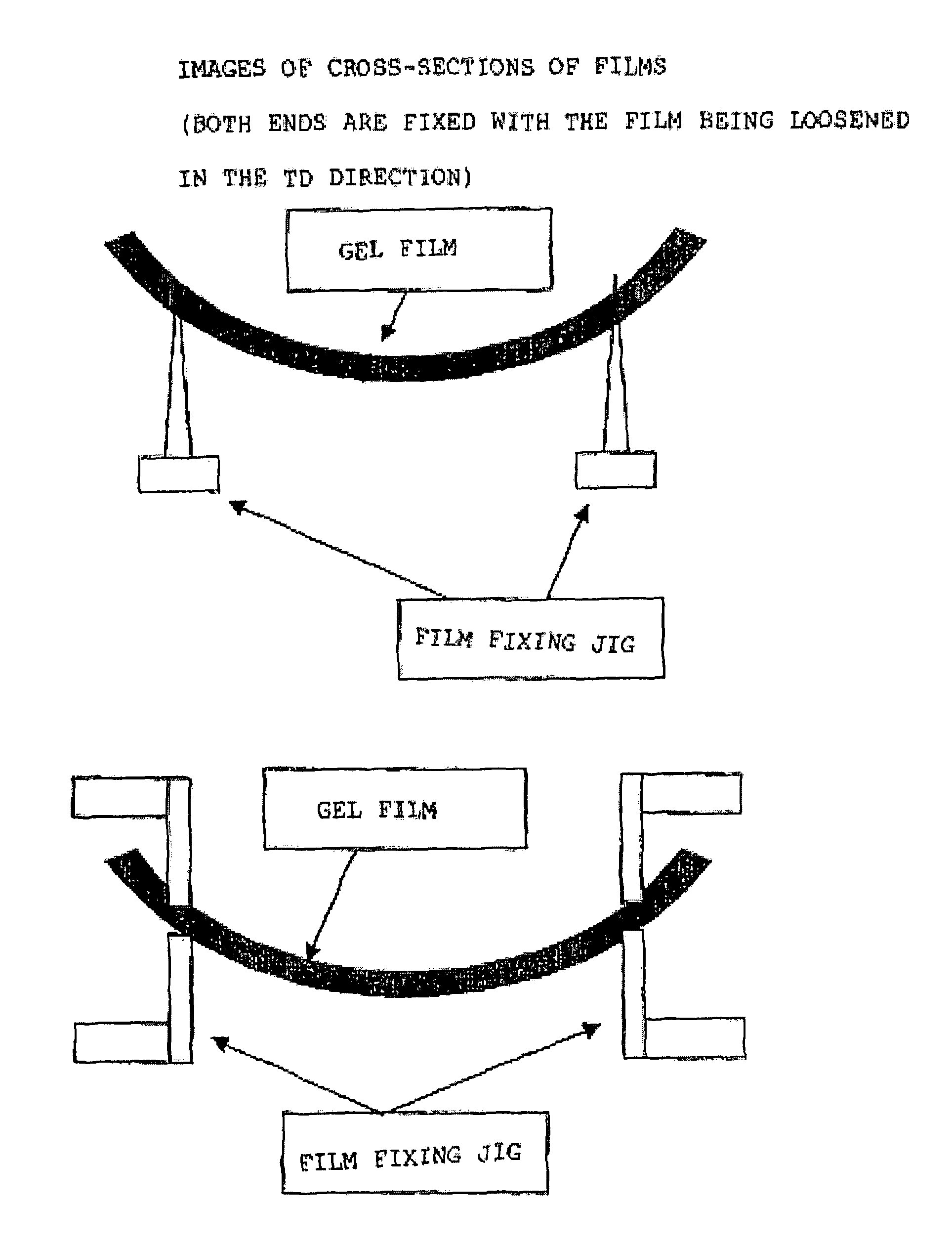Adhesive film, flexible metal-clad laminate including the same with improved dimensional stability, and production method therefor
a technology of flexible metalclad laminates and adhesive films, which is applied in the field of adhesive films, can solve the problems of components not being satisfactorily connected to the boards, the three-layer fpc including the thermosetting adhesives will have difficulties in meeting such requirements, and the improvement is not sufficien
- Summary
- Abstract
- Description
- Claims
- Application Information
AI Technical Summary
Benefits of technology
Problems solved by technology
Method used
Image
Examples
synthesis example 1
Synthesis of Polyimide Film
[0114]In the presence of a N,N′-dimethylacetamide solvent, polymerization of pyromellitic dianhydride / p-phenylenebis(trimellitic acid monoester anhydride) / 4,4′-diaminodiphenyl ether (4,4′-oxydianiline) / para-phenylenediamine, at a molar ratio of 1 / 1 / 1 / 1, was performed so that the solid content was 18%.
[0115]The polymerization solution was cooled to about 0° C., and 2.1 mole percent of acetic anhydride and 1.1 mole percent of isoquinoline were added per mole of amic acid in the organic solvent solution of the polyamic acid cooled to about 0° C. After stirring was performed thoroughly, the resulting mixture was extruded from a die that was retained at about 5° C. and cast and applied onto an endless belt. The applied mixture was heated at 140° C. or less on the endless belt, and thereby a gel film with a residual component ratio of 54% was produced.
[0116]The resulting green sheet (gel film) having self-supporting properties was stripped off. Subsequently, wit...
synthesis example 2
Synthesis of Polyimide Film
[0117]A film was produced as in Synthesis Example 1 except that the degree of expansion and shrinkage was changed as shown in Table 2. The angles of molecular orientation axis of the resulting film are shown in Table 2.
synthesis example 3
Synthesis of Polyimide Film
[0118]A film was produced as in Synthesis Example 1 except that the heating conditions and the degree of expansion and shrinkage were changed as shown in Tables 1 and 2. The angles of molecular orientation axis of the resulting film are shown in Table 2.
PUM
| Property | Measurement | Unit |
|---|---|---|
| temperature | aaaaa | aaaaa |
| temperature | aaaaa | aaaaa |
| particle size | aaaaa | aaaaa |
Abstract
Description
Claims
Application Information
 Login to View More
Login to View More - R&D
- Intellectual Property
- Life Sciences
- Materials
- Tech Scout
- Unparalleled Data Quality
- Higher Quality Content
- 60% Fewer Hallucinations
Browse by: Latest US Patents, China's latest patents, Technical Efficacy Thesaurus, Application Domain, Technology Topic, Popular Technical Reports.
© 2025 PatSnap. All rights reserved.Legal|Privacy policy|Modern Slavery Act Transparency Statement|Sitemap|About US| Contact US: help@patsnap.com



